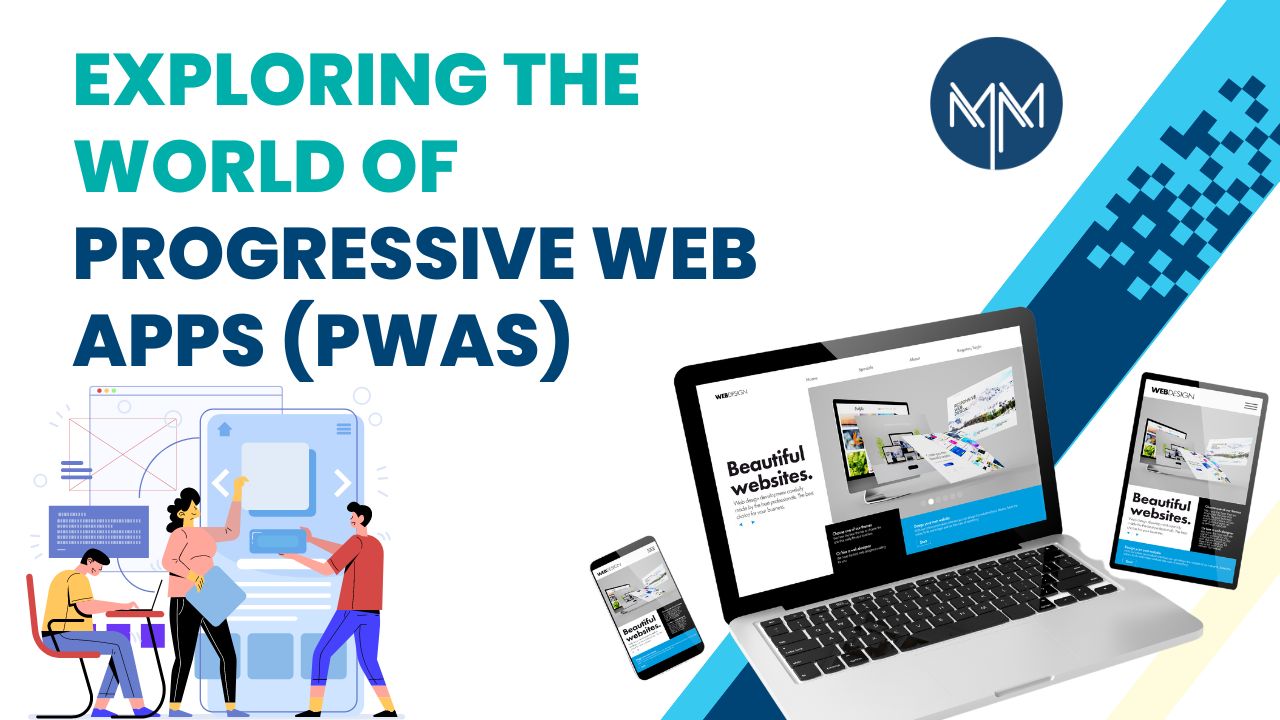Progressive Web Apps (PWAs) have emerged as a revolutionary force in this ever-evolving scenario of web development. It seamlessly blends the best of web and mobile applications, satisfying the necessities of the users. As businesses strive to provide a superior user experience, PWAs have become a key player in achieving this goal.
So, what are the crucial reasons that are making the PWAs a hot topic within the tech sector?
With the help of this comprehensive guide, we will embark on a journey into the world of PWAs, exploring the features, benefits, and their transformative impact over the digital realm. Let’s begin learning about the exciting factors of PWAs.
Defining Progressive Web Apps (PWAs)
Progressive Web Apps are web applications that leverage modern web technologies to deliver an app-like experience to users.
Did you know that PWAs deliver an immersive app-like experience with offline functionality, blending web and mobile advantages for seamless user interaction?
Unlike traditional web apps, PWAs are designed to work on any device with a web browser, offering a responsive and engaging user interface. The core principles of PWAs include responsiveness, connectivity independence, app-like interactions, and an immersive user experience.

Factors to consider about PWAs
Offline Functionality:
One of the standout features of Progressive Web Apps (PWAs) is their ability to function seamlessly even in offline environments. This is made possible through the implementation of service workers, which are scripts running in the background.
These service workers cache essential resources, such as HTML, CSS, and JavaScript files, enabling the PWA to operate without a live internet connection. This ensures that users can continue interacting with the app, accessing previously loaded content, and performing essential functions in areas with poor or no internet connectivity.
Responsive Design:
The most impressive feature of the PWAs is their responsiveness.
PWAs are designed with a responsive approach, allowing them to adapt seamlessly to various screen sizes and resolutions. This responsiveness ensures a consistent and user-friendly experience across a spectrum of devices, whether users are accessing the app from a desktop computer, tablet, or smartphone.
By embracing responsive design principles, PWAs eliminate the need for separate versions of the app for different devices, providing a unified and optimized user interface, which makes the function user-friendly.
App-Like Interactions:
PWAs go beyond the traditional web experience by offering users a native app-like interaction. This includes smooth animations, transitions, and gestures that contribute to a more immersive and enjoyable user interface.
The goal behind this particular circumstance is to replicate the feel and responsiveness of native mobile applications, enhancing the overall user experience. Users can enjoy fluid navigation and seamless interactions, fostering engagement comparable to that of dedicated mobile apps.
Push Notifications:
PWAs leverage push notifications to keep users informed and engaged, even when the app is not actively open. This powerful feature allows businesses to communicate directly with their audience, providing real-time updates, promotions, or other relevant information.
Push notifications enhance user engagement, prompting users to re-engage with the app and stay connected with the latest developments, ultimately strengthening the relationship between the user and the app.
Secure Connection (HTTPS):
Security is paramount in the digital landscape, and PWAs address this concern by requiring a secure connection through HTTPS. This ensures the integrity of data transmission, protects user information from potential threats, and maintains a secure browsing experience. The use of HTTPS not only safeguards sensitive data but also builds trust among users, assuring them that their interactions with the PWA are conducted in a secure online environment.
Benefits of PWAs
- Enhanced User Experience: PWAs offer a seamless and fast user experience, eliminating the need for users to download and install applications. This frictionless interaction enhances user satisfaction and encourages higher engagement rates.
- Cost-Effective Development: Developing separate applications for different platforms can be resource-intensive. PWAs, being web-based, allow for a single codebase that works across various devices, reducing development costs and effort.
- Improved Performance: Thanks to features like caching and service workers, PWAs load quickly and efficiently, providing a smooth experience even in low-network conditions. This optimization contributes to a better overall performance compared to traditional web applications.
- Increased Discoverability: PWAs are discoverable through search engines, making it easier for users to find and access the content. This can lead to higher organic traffic and better visibility for businesses.
- Offline Accessibility: With the ability to function offline, PWAs cater to users in areas with unreliable internet connections. This offline accessibility is a significant advantage, especially for businesses targeting a global audience.
Comparing PWAs with Other App Development Techniques
When comparing Progressive Web Apps (PWAs) with other app development approaches, key distinctions emerge. Traditional native apps require separate codebases for each platform, leading to increased development time and costs. PWAs, on the other hand, offer a single codebase that functions across various devices and platforms, reducing development efforts and expenses.
In contrast to native apps, PWAs don’t require installation from an app store, eliminating friction for users and fostering accessibility. This ease of access is complemented by PWAs’ offline functionality, a feature often lacking in traditional web or native apps. While native apps excel in utilizing device-specific features, PWAs leverage web technologies to provide a consistent user experience.
Ultimately, PWAs present a compelling alternative, offering a balance between the seamless, offline-capable nature of native apps and the cost-effective, cross-platform advantages of web development. This makes PWAs an attractive choice for businesses seeking a versatile and user-friendly solution.

Conclusion
Progressive Web Apps have undoubtedly carved a niche for themselves in the realm of web development, offering a compelling alternative to traditional applications. Their ability to provide an app-like experience across devices, coupled with features like offline functionality and push notifications, has propelled them into the spotlight. As businesses continue to prioritize user experience and seek cost-effective solutions, PWAs are poised to play a pivotal role in shaping the future of digital interactions. Embracing this technology is not just a trend; it’s a strategic move towards delivering superior, accessible, and engaging digital experiences for users worldwide.
Elevate your business with a custom website using Progressive Web Apps (PWAs). Matrix Media Solutions offers expert web development services, creating robust and tailored websites. Our skilled developers specialize in harnessing the power of PWAs to enhance your online presence. Consult with our experienced team to explore the transformative potential of this advanced web development technique for your brand.


 December 18, 2020
December 18, 2020

